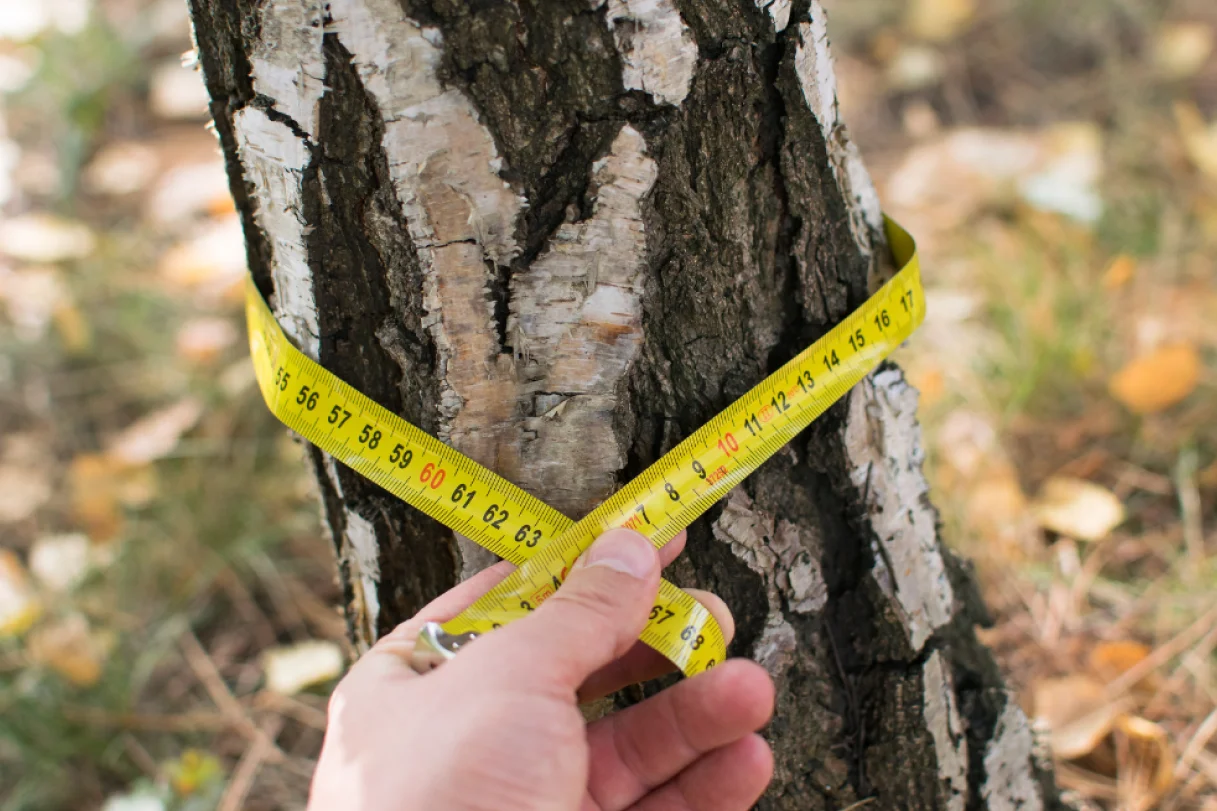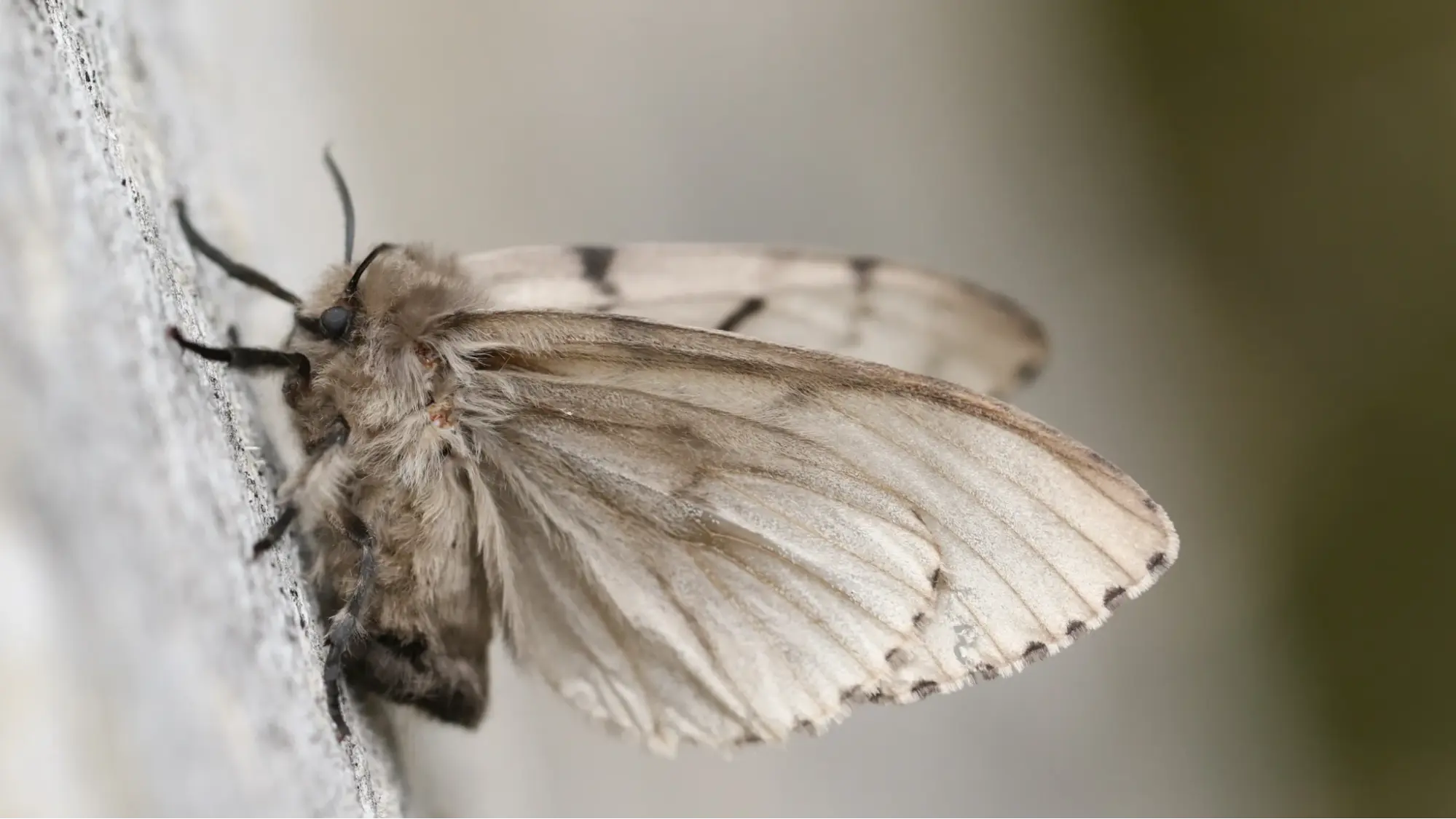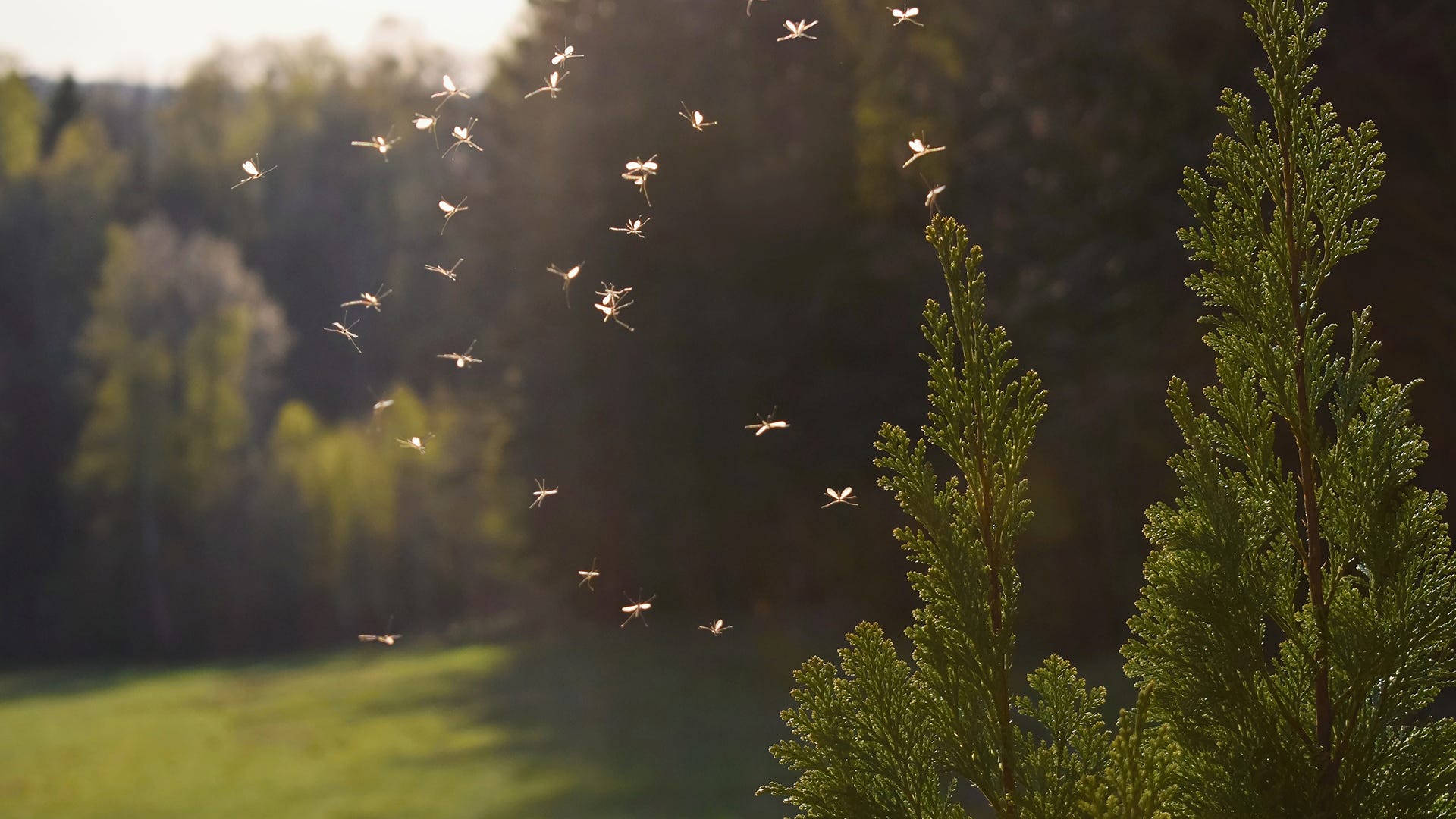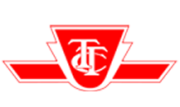Pruning your hydrangea tree at the right time is key to vibrant flowers and a strong structure. This guide will help you choose the right season, tools, and methods for healthy growth and lasting blooms.
Before you begin hydrangea tree pruning, it’s essential to know which species you're working with. Different types of hydrangea trees bloom on old or new wood, meaning improper timing or technique could prevent flowering altogether.
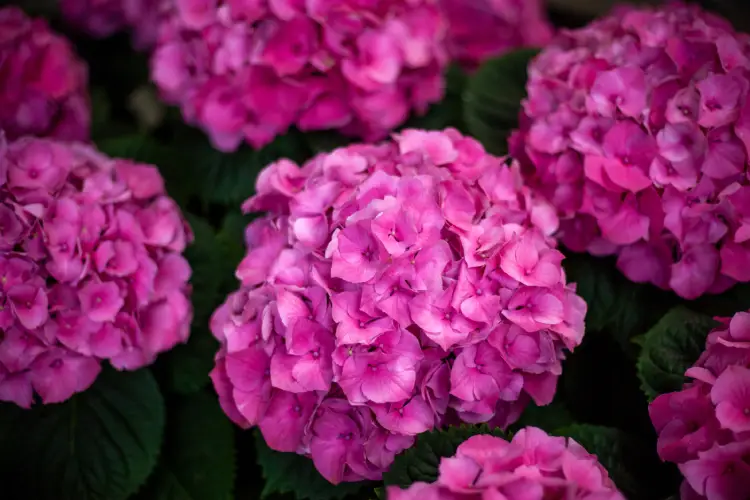
How to Identify Your Hydrangea Species?
Identifying your hydrangea species helps determine the best time to prune and how aggressively you can trim. From large, showy blooms to delicate climbing varieties, each type has unique pruning needs that directly affect its health and appearance.
As the Toronto Master Gardeners note, proper species identification is the foundation of successful pruning. Many hydrangeas in the GTA fail to flower simply because they were pruned at the wrong time.
One hydrangea tree can produce an impressive number of flower clusters in a single season — often well over a hundred when properly pruned and maintained. - Chicago Botanic Garden
Bigleaf Hydrangea
(Hydrangea macrophylla)
Leaves: Large, glossy, and heart-shaped with a serrated edge.
Flowers: Rounded "mophead" or flatter "lacecap" blooms in shades of pink, blue, or purple, depending on soil pH.
Growth habit: Dense, bushy shrubs about 3–5 feet tall.
Bark: Soft, greenish-brown stems that remain flexible year-round.
Common in: Toronto residential gardens, especially in partially shaded spots.
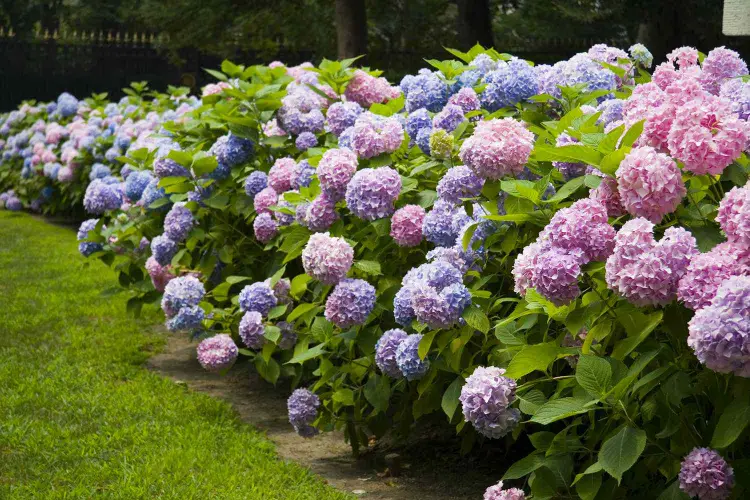
Oakleaf Hydrangea
(Hydrangea quercifolia)
Leaves: Deeply lobed like oak leaves, turning brilliant red or burgundy in fall.
Flowers: Cone-shaped (panicle) clusters of white flowers that may blush pink with age.
Growth habit: Upright, multi-stemmed shrub with a more open form.
Bark: Peels attractively with age, revealing cinnamon-coloured layers.
Common in: Shadier garden beds and naturalized landscapes.
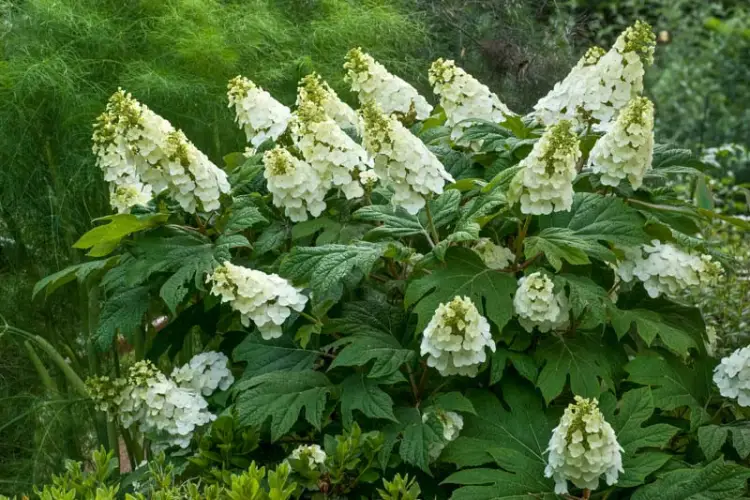
Panicle Hydrangea
(Hydrangea paniculata)
Leaves: Medium green, ovate, and slightly serrated.
Flowers: Large, cone-shaped panicles of white blooms that age to pink or lime green.
Growth habit: Can be trained as a tree or kept as a large shrub.
Bark: Light brown, woody stems that become more rigid over time.
Common in: Sunny areas across the GTA; one of the most cold-hardy types.
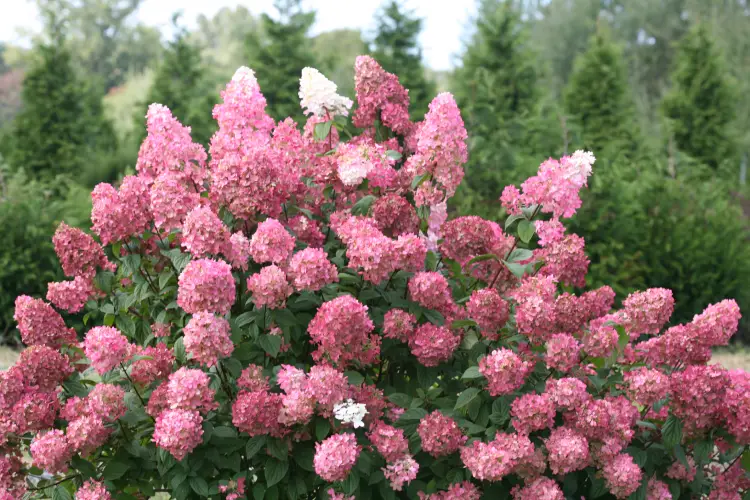
Smooth Hydrangea
(Hydrangea arborescens)
Leaves: Soft, matte green, and heart-shaped with a finer texture than bigleaf.
Flowers: Dome-shaped white blooms, most commonly seen in ‘Annabelle’ cultivars.
Growth habit: Rounded, loosely structured shrub with thinner stems.
Bark: Greenish stems that turn woody as they age.
Common in: Residential gardens and foundation plantings; shade-tolerant.
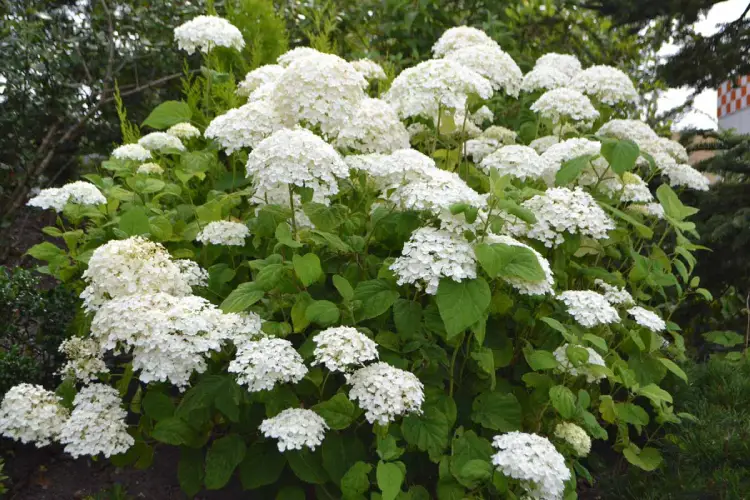
Climbing Hydrangea
(Hydrangea anomala petiolaris)
Leaves: Glossy, dark green, ovate with fine teeth.
Flowers: Flat clusters of small white flowers with showy sterile blooms around the edges.
Growth habit: Vigorous climber that clings with aerial rootlets.
Bark: Exfoliating, reddish-brown bark on mature stems.
Common in: Shady walls, fences, or trunks of large trees in Toronto gardens.
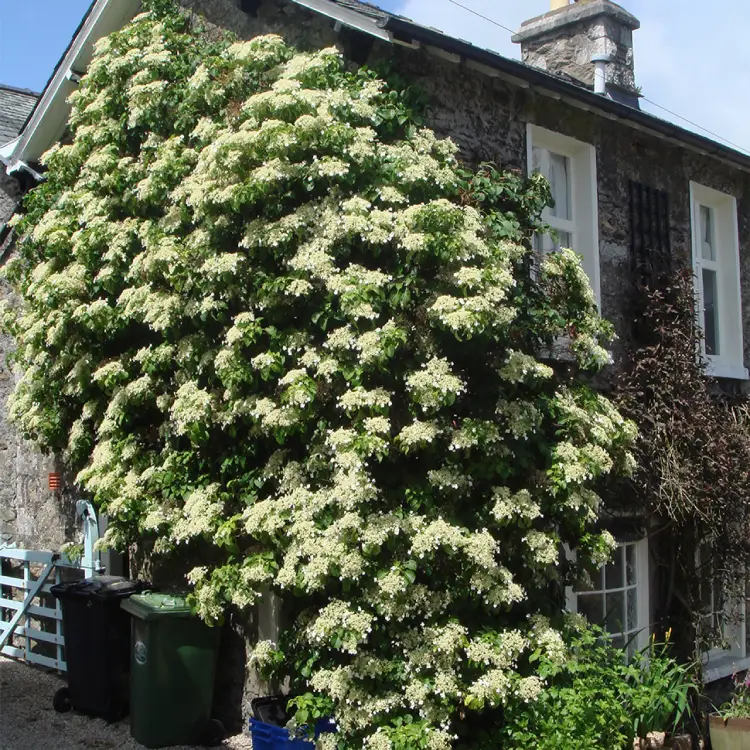
Hydrangeas have been cultivated for over 1,300 years.
The earliest records of hydrangea cultivation come from Japan around the 8th century, mentioned in poetry and court documents. Hydrangeas were first introduced to Europe in the 18th century, where they quickly became prized garden specimens. - The Garden History
When Is the Optimal Time for Pruning?
Timing matters more than most people think. Prune too early, and you risk cutting off developing buds. Too late, and the tree may not have enough time to heal before winter.
For hydrangeas that bloom on old wood, like bigleaf or oakleaf varieties, the best time to prune is right after flowering, usually mid to late summer in the GTA. That gives the plant time to set buds for next year before the first frost.
Species like panicle or smooth hydrangeas, which bloom on new wood, prefer a late-winter or early-spring trim, just before new growth appears. These types are more forgiving, making them a good fit for newer gardeners.
In Toronto’s climate, aim to finish all major pruning by early fall. The tree needs time to redirect energy toward root strength and cold-weather resilience.
These pruning guidelines are consistent with recommendations from Landscape Ontario and other regional plant care resources. If you’re unsure about timing, or want expert help shaping your tree properly, Tree Doctors' tree trimming and pruning service can provide professional guidance based on species and season.
|
Hydrangea Species |
Best Time to Prune |
Pruning Tips |
|
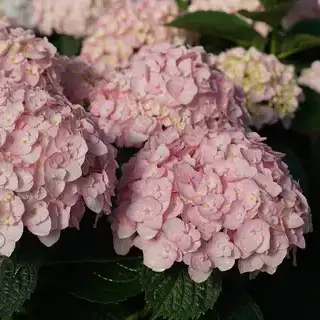 |
Bigleaf |
Late summer, |
Light pruning only; avoid cutting spring buds |
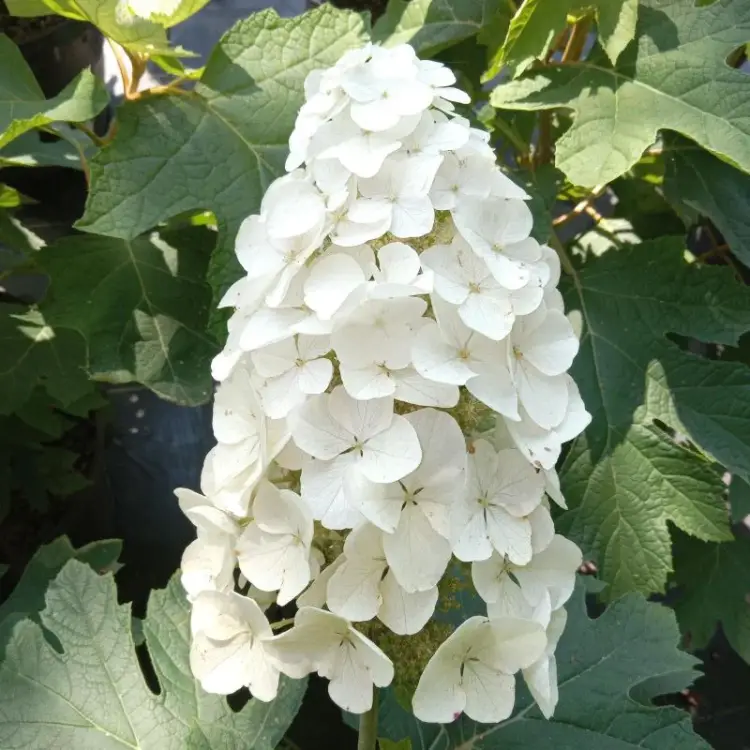 |
Oakleaf |
Late summer, |
Minimal pruning to maintain shape |
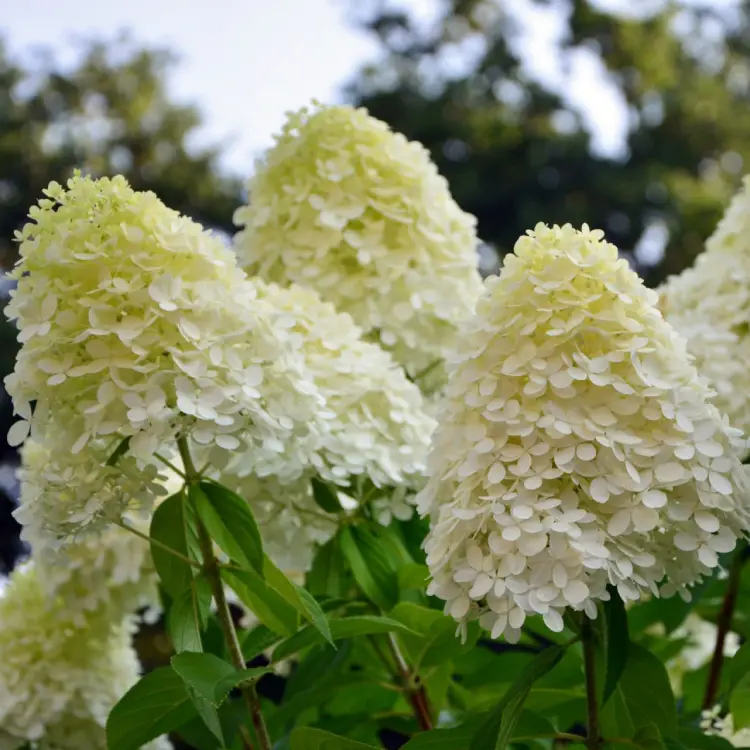 |
Panicle |
Late winter |
Can handle heavy pruning for shape and stronger stems |
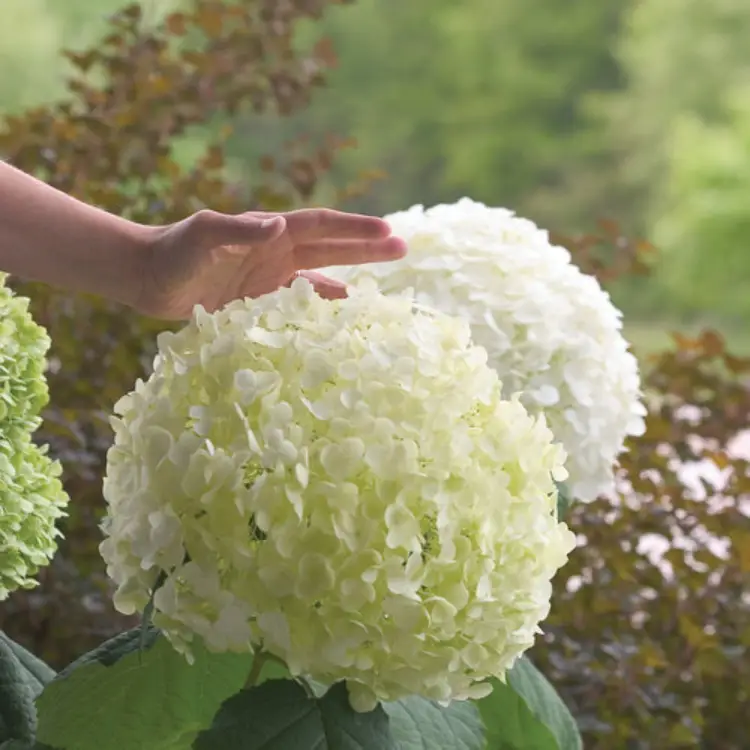 |
Smooth |
Early spring, |
Prune back hard to encourage larger blooms |
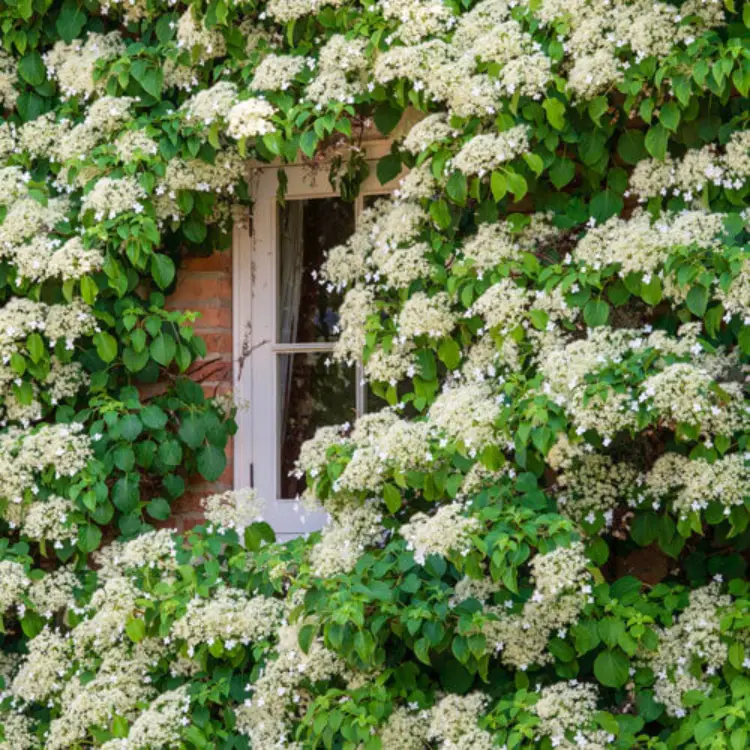 |
Climbing |
After flowering, |
Prune lightly to control growth; remove dead or weak wood |
Connect With a Certified Arborist Today
From inspections to emergency removals, our team is ready to help
Request a Free Assessment

What Are the Best Pruning Techniques?
Hydrangea tree pruning isn’t just about cutting branches, it’s about knowing how much to trim, where to make your cuts, and how to support long-term plant care. Using the right techniques improves air circulation, directs energy to healthy growth, and enhances the overall shape and beauty of the tree.
Here are some key pruning techniques for optimal results:
1. Remove dead or damaged wood first: Always start by cutting out branches that are dead, diseased, or broken.
2. Cut just above healthy buds: When shaping the tree, make angled cuts ¼ inch above a healthy bud to encourage outward growth.
3. Thin crowded branches: Remove weak or crossing stems to allow more light and air into the center of the tree.
4. Shape gradually: Avoid cutting back too much at once - gentle, annual pruning is safer than drastic cuts.
5. Disinfect your tools: Between trees (and sometimes between cuts), clean tools with rubbing alcohol to prevent disease spread.
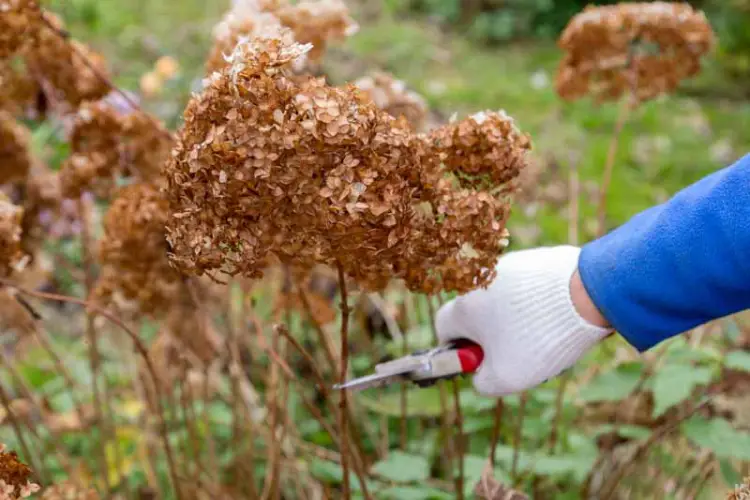
Whether you're trimming for size, shape, or flower production, consistency is key. Prune annually as part of your routine hydrangea tree care for the healthiest, most vibrant results.
Although most hydrangeas in Canadian gardens come from just a handful of cultivated species, the genus includes more than 70 types spread across Asia and the Americas. Only a few grow in tree form, making Hydrangea paniculata one of the most versatile and popular choices in colder climates like ours. - Wikipedia
Which Tools Should You Use and How to Care for Them?
Using the right tools makes hydrangea tree pruning easier, cleaner, and safer for the plant. Clean cuts help your tree heal quickly and reduce the risk of disease. Dull or dirty tools, on the other hand, can cause unnecessary damage.
|
Tool |
Purpose |
|
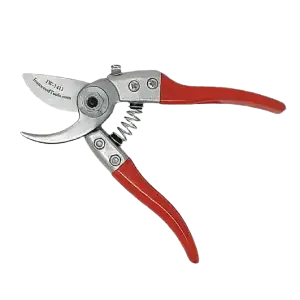 |
Bypass Pruners |
Best for live stems and small branches up to 2 cm. Their scissor-like action makes clean cuts near buds or tips. Keep blades sharp to avoid tearing. |
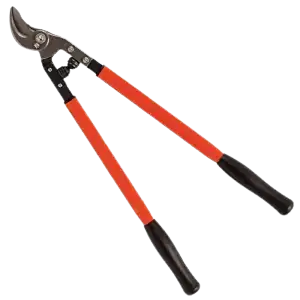 |
Loppers |
Handle thicker branches (up to 5 cm). Long handles give extra leverage — use both hands and avoid twisting. Helpful for shaping or base cuts. |
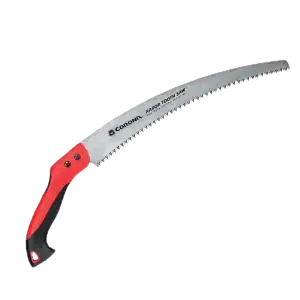 |
Pruning |
Cuts through larger, woody limbs. Use slow, steady strokes to avoid splintering. Ideal for old stems or reshaping overgrown plants. |
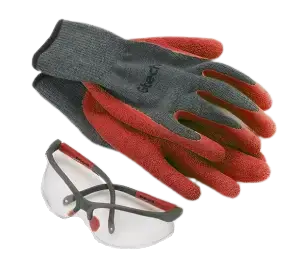 |
Gloves & Safety Glasses |
Gloves protect from sap, bark, and thorns. Safety glasses guard against flying debris — a must when working in dense or overhead growth. |
Tool Maintenance Tips
Keeping your tools in good condition isn’t just about longevity, it’s about tree health. After each use, wipe down the blades with rubbing alcohol or soapy water. This simple habit removes sticky sap, prevents rust, and helps stop the spread of disease between plants.
Sharpening is just as important. Sharp blades make clean, precise cuts that heal quickly, while dull ones tend to crush stems and leave ragged edges. A quick file before pruning season can make a big difference in both performance and plant recovery.
Finally, store your tools properly. A dry spot with blade covers and a light coat of oil helps prevent corrosion and keeps everything ready for the next session. Well-maintained tools work better, last longer, and protect the trees you care for.
By keeping your tools in top shape, you ensure that every pruning session supports the health and care of your hydrangea tree. Well-maintained tools also last longer and work more efficiently.
What are the Mistakes for Pruning Hydrangeas?
The biggest mistake with hydrangea pruning comes down to timing, or more specifically, pruning without knowing whether your tree blooms on old wood or new.
Many people assume that cutting back in early spring will encourage fresh growth, but if you're working with a bigleaf or oakleaf hydrangea, those buds were set the previous summer. Remove them too early, and you'll likely see leaves but no flowers for the rest of the season.
Another common issue is over-pruning. Cutting too far into the main structure can stress the plant and disrupt its natural shape, especially if it has been pruned heavily in previous years. Hydrangeas require a balance of airflow, light exposure, and strong stems, rather than a complete reset.
A third mistake is making the wrong kind of cut. Cuts that are too close to the bud or angled incorrectly can cause dieback or invite disease. Ideally, cuts should be made about ¼ inch above a healthy bud and on a slight outward angle to direct new growth away from the centre of the plant.
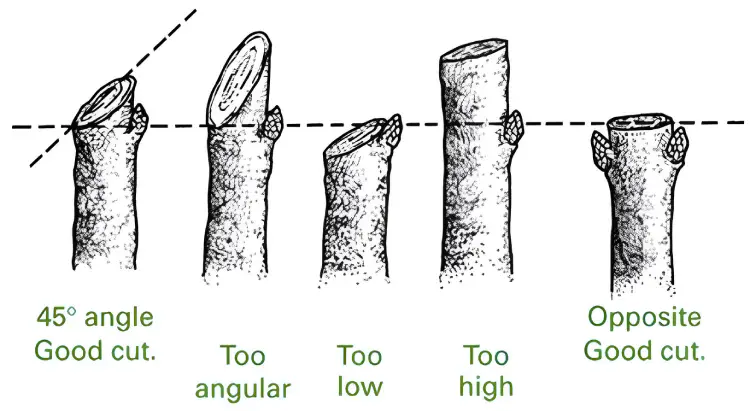
In Toronto's climate, where winters can be hard on branches and late frosts sneak in well into spring, it’s even more important to let your tree guide the process. Look for signs of damage, remove only what’s necessary, and leave enough mature growth to support next year’s blooms.
When in doubt, gentle shaping is better than guesswork. And if your tree’s health or flowering seems off year after year, it might be time to bring in an expert to reassess both the pruning and overall care approach.
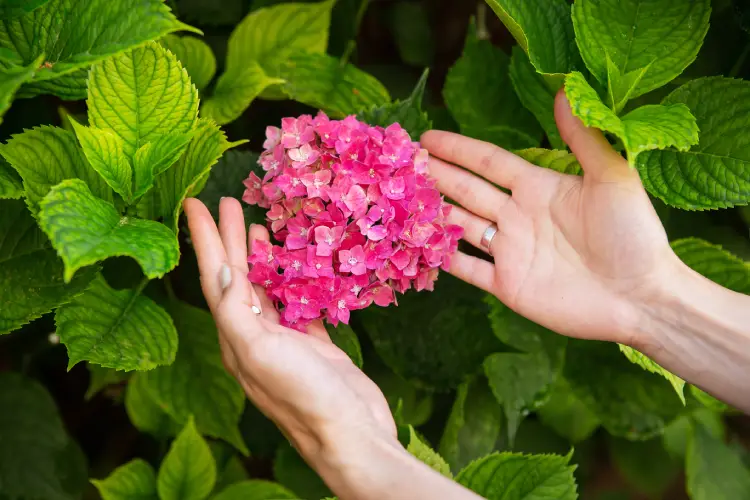
Pruning a hydrangea tree isn’t complicated, but it does require attention. Timing matters, as does knowing your species and observing how the tree grows from year to year.
When done with care, pruning helps the tree stay healthy, balanced, and strong enough to support full summer blooms and withstand the demands of our local climate.
Need Help With Pruning? Call Tree Doctors
If you’re feeling unsure about how or when to prune your hydrangea tree, you’re not alone. Every species responds differently, and the timing can shift depending on weather, age, or past care.
Tree Doctors has been helping homeowners across Toronto and the GTA care for their trees with science-backed practices and seasonal expertise. Whether you need a one-time prune, a long-term maintenance plan, or just a second opinion, our certified arborists are here to help.
Our tree trimming and pruning service is tailored to the specific needs of each tree and site. And if your hydrangea is recovering from stress or poor soil, we may recommend root fertilization to support new growth and future blooms.
Let’s make your hydrangea the kind neighbours slow down to admire. With the right care, it can be the most beautiful tree on the block, and we’d love to help you get it there.
Connect With a Certified Arborist Today
From inspections to emergency removals, our team is ready to help
Request a Free Assessment

